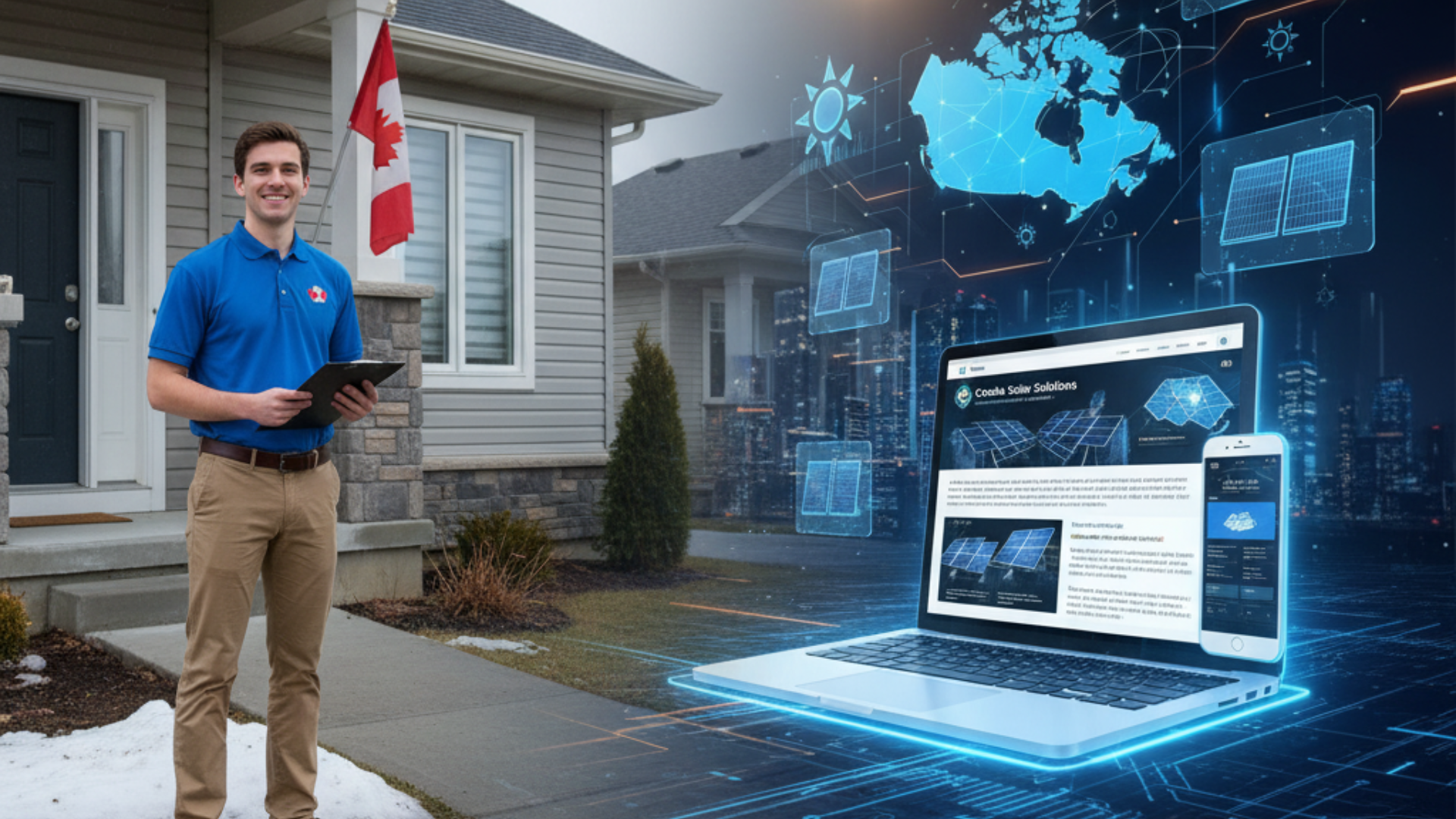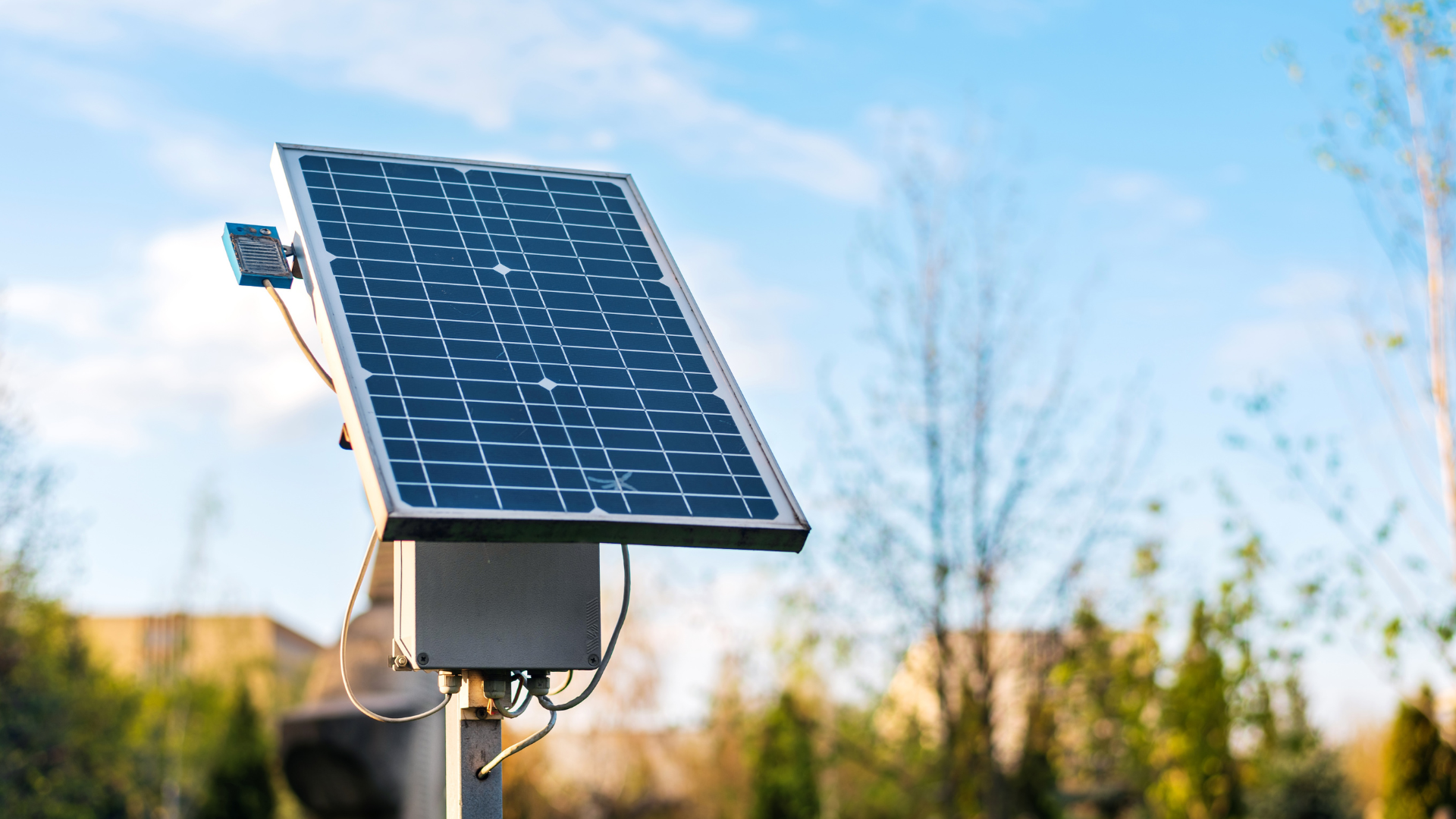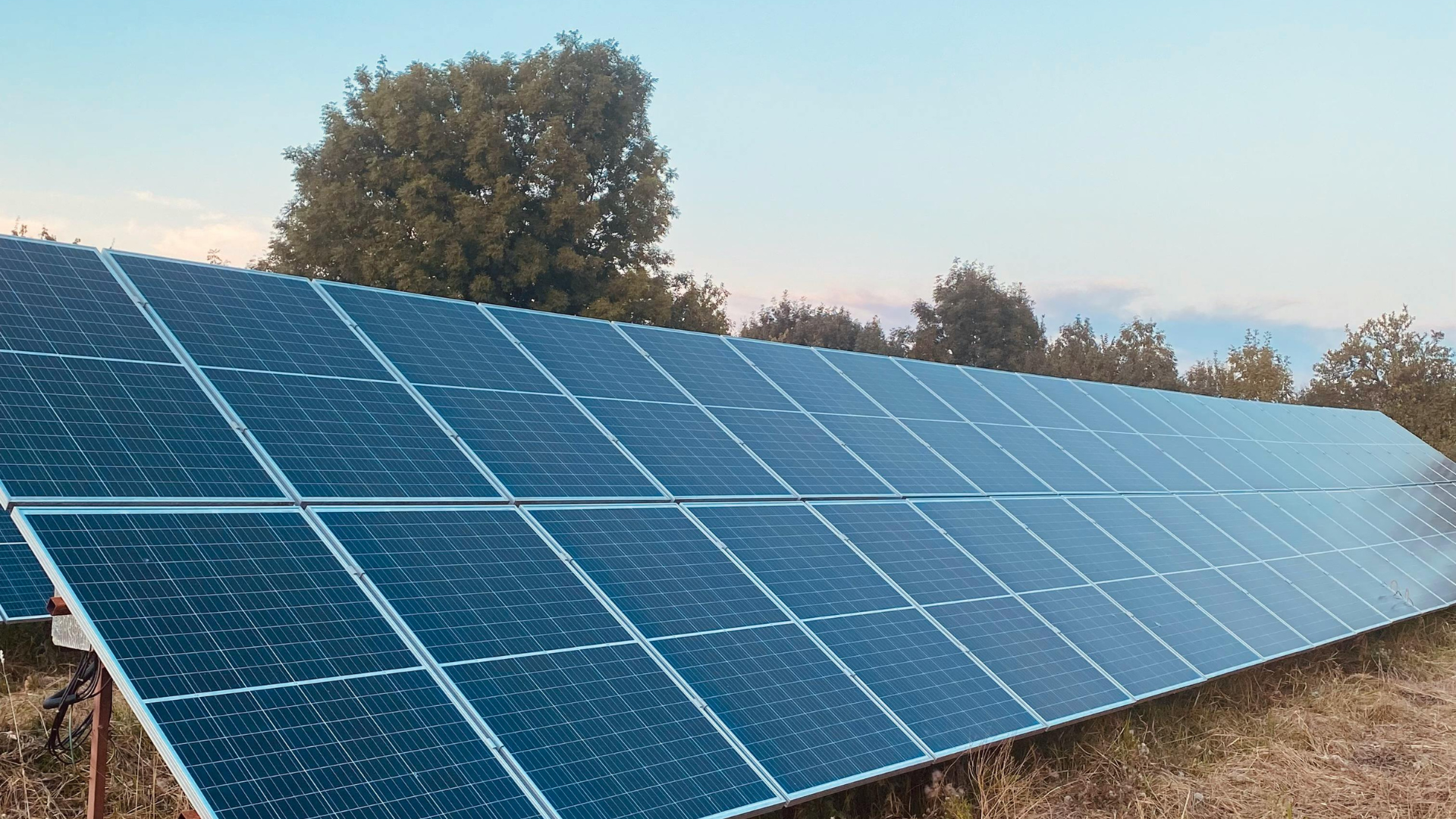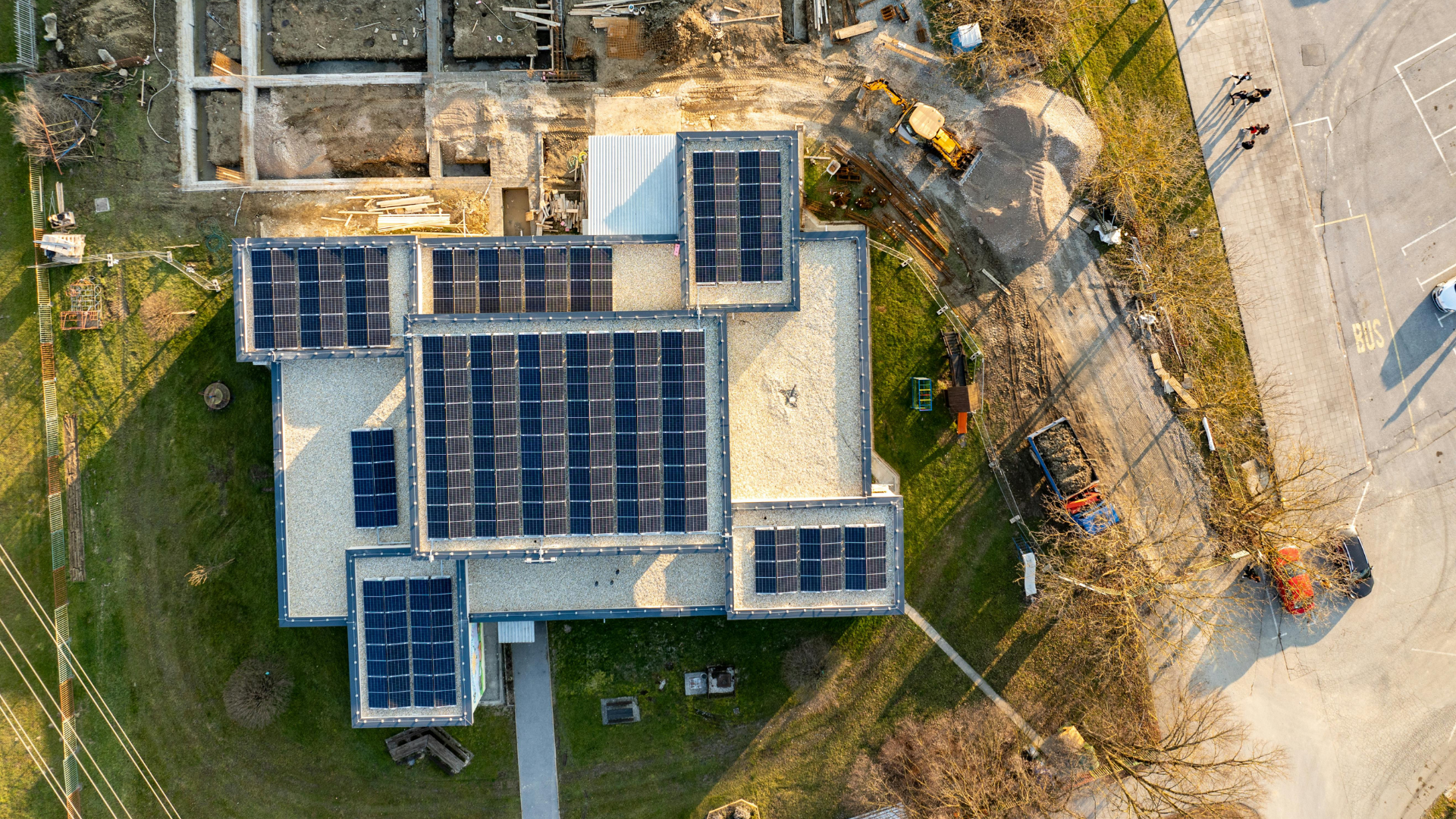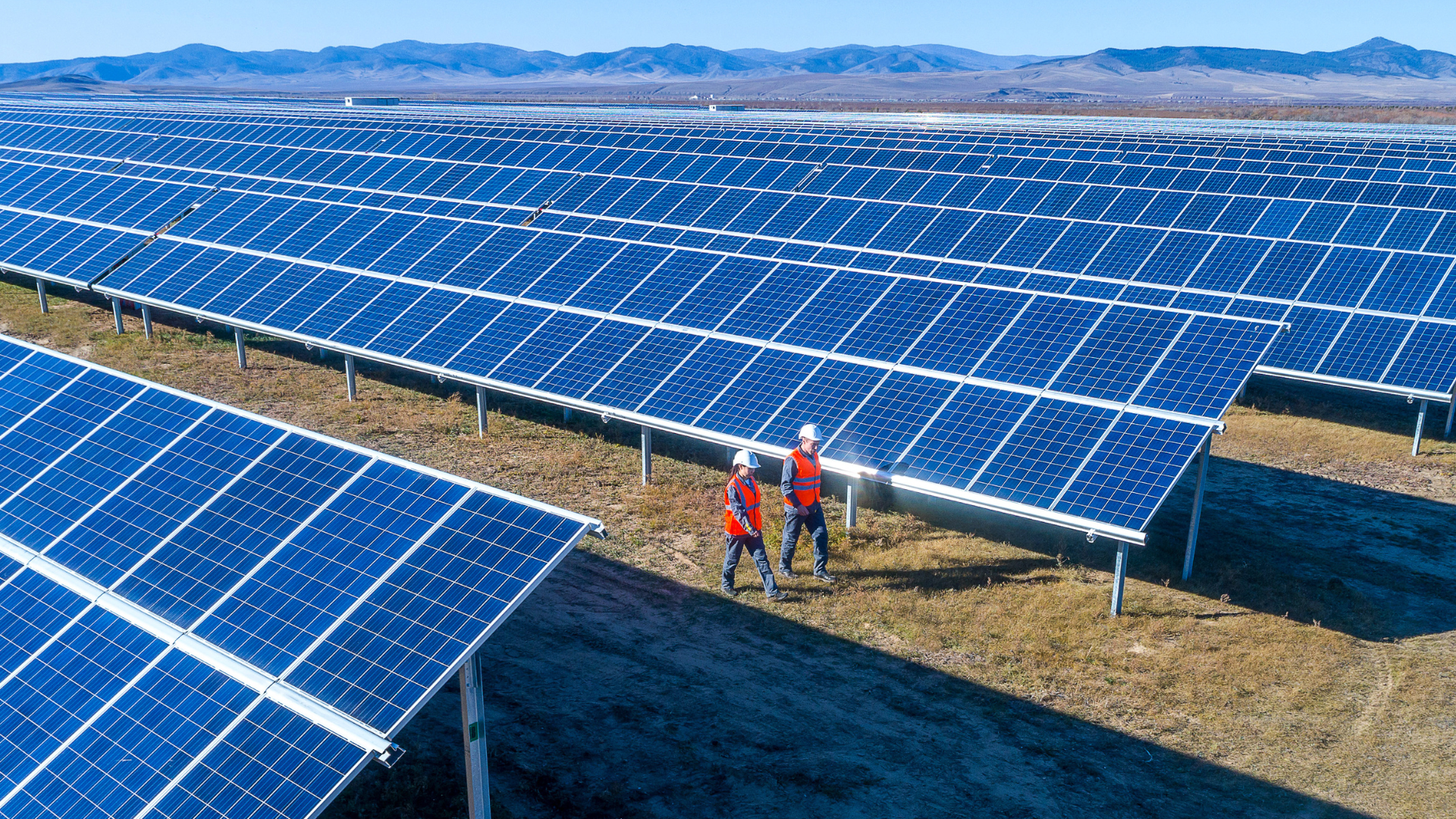December 17, 2022
As a solar company, it's important to have an understanding of the different factors that can affect the output of solar panels.
By understanding these factors, you can optimize the performance of your panels and ensure that your customers are getting the most value for their investment.
In this blog post, we'll explore some of the key factors that impact solar panel output.
Solar Panels
Let us start by talking about the types of solar panels.
Investing in solar energy is a smart decision for businesses. Solar panels are an excellent source of renewable energy, and they can be used to power your business’s operations, reduce your energy costs, and increase your sustainability.
There are a few different types of solar panels available on the market, so understanding the key differences between them is important when deciding which type best suits your needs.
Let’s take a look at three common types of solar panels that businesses use today.
Monocrystalline Solar Panels
Monocrystalline solar panels are made up of pure silicon crystals and are considered to be the most efficient type among all other solar panel types.
These panels have a higher efficiency rating due to their ability to absorb more sunlight than other panels, which makes them ideal for small spaces or areas with limited sunlight.
They also require less maintenance over time and have a longer lifespan than other types of solar panels. The only downside is that monocrystalline solar panels tend to be more expensive than other types.
Polycrystalline Solar Panels
Polycrystalline solar panels are made up of multiple silicon crystals, giving them a unique appearance compared to monocrystalline models.
These panels tend to be less efficient than their monocrystalline counterparts, but they are much more affordable and require less space due to their smaller size.
They also require less maintenance over time, making them ideal for businesses looking for an inexpensive option with minimal upkeep costs.
Thin-Film Solar Panels
The last type of solar panel is thin-film technology, which is made up of layers of materials such as amorphous silicon or copper indium gallium selenide (CIGS).
These layers give the panel the ability to absorb light from multiple angles and directions, making it very effective in areas where sunlight is not always available.
However, these thin-film models are typically not as efficient as monocrystalline or polycrystalline models and often require more maintenance over time due to their delicate nature.
When it comes down to choosing the right type of solar panel for your business needs, you must take into consideration factors such as efficiency ratings, cost-effectiveness, overall size requirements, and ease of maintenance before making your final decision.
Ultimately it’s up to you--be sure to do plenty of research before investing in any type of solar panel system.
Are you wondering if there is an open-source design software, you can read more about it in our blog post.
Is There Any Open Source Solar Design Software?
Let us now go ahead and read about solar panels' output efficiency and how it is measured.
Solar panel output efficiency
When considering a solar system for your business, it’s important to understand the nuances of solar panel output efficiency. This includes what exactly the efficiency is and How it is measured.
Let’s review the basics of solar panel output efficiency so that you can make an informed decision when looking at commercial solar systems.
What Is Solar Panel Output Efficiency?
Solar panel output efficiency measures how much energy a particular type of solar panel can produce compared to its size. The higher the output efficiency, the more electricity a single panel can generate from sunlight, therefor this also is helpful to determine how much electricity it consumes and the power output.
Generally speaking, this means that high-efficiency panels require less space than low-efficiency panels to generate the same amount of electricity.
How Is Solar Panel Output Efficiency Measured?
Solar panel output efficiency is typically expressed as a percentage and calculated using the following formula: (Total AC Power/ Total Input Power). To calculate the overall system efficiency, we must also take into account any losses due to wiring, weather conditions, tilt angle, etc.
For example, if a 250-watt solar panel produces 250 watts of AC power after being exposed to 1 kW/m2 of sunlight for one hour, then its output efficiency would be 25%. The higher the number, the more efficient the solar panel is at converting sunlight into electricity.
Benefits Of High-Efficiency Solar Panels
High-efficiency solar panels are becoming increasingly popular due to their ability to generate more electricity than traditional low-efficiency panels.
Access to more energy
This means that businesses have access to more energy while taking up less space on their roofs or in their parking lots.
Cheaper installation
Additionally, high-efficiency solar panels are often cheaper in terms of installation costs since fewer panels are needed for the same amount of energy production.
High-efficiency
Finally, high-efficiency modules often contain fewer parts which make them easier and cheaper to maintain over time.
In conclusion, understanding solar panel produce efficiency is essential for businesses looking to invest in a commercial solar system.
High-efficiency modules offer numerous benefits including increased energy production with less space taken up by fewer parts that require less maintenance over time.
As such, it’s important for companies to look into high-efficiency models when selecting their ideal commercial system solution so they can get maximum value out of their investment and reduce their operating costs over time.
Understanding Solar Panel Output Efficiency
The efficiency of solar panel output is an important factor in determining the success of a solar power system.
By understanding the different factors that affect solar panel output, companies can make sure they are making the most efficient use of their resources and getting the best results from their systems.
Temperature Variance
The temperature has a direct effect on the efficiency of solar panel outputs and should be monitored closely. As ambient temperatures increase, photovoltaic cells can become less efficient due to thermal losses.
Conversely, if temperatures drop too far below optimum levels, it can also result in decreased efficiency due to increased resistance in electrical components. It is important to ensure optimal temperature levels for maximum solar panel efficiency.
Shading and Dirt Buildup
Shading caused by trees or other objects can significantly reduce solar panel output efficiency by blocking direct sunlight from reaching the panels.
In addition, dirt and debris buildup on the surface of the panels can also cause shading which will reduce overall output performance.
Regular maintenance such as cleaning and trimming back tree branches should be done to ensure maximum performance from your system's solar panels.
Light Intensity and Angle
The angle at which light hits a photovoltaic cell affects its ability to absorb energy from the sun's rays. If the light is too intense or coming in at an angle that is not optimal, it will be reflected away instead of being absorbed as useful energy.
To get the most out of your system's solar panels, it is important to monitor light intensity and angle so that they remain within recommended ranges for maximum efficiency.
Type Of Solar Cell
The type of solar cell used can have a big impact on the efficiency of a solar panel system. So, It is important to consider both cost and efficiency when making your decision.
Solar Panel Placement
Where you place your solar panels will also have an effect on their efficiency. Try to install them in an area that receives direct sunlight throughout most of the day; if they are placed in shade or indirect light, their efficiency will suffer as less sunlight is reaching them.
Solar Panel Maintenance
Finally, proper maintenance is essential for keeping your solar panel system running at peak efficiency.
Additionally, you should make sure that all connections between components are secure and free of corrosion; this can help minimize losses due to resistance or poor connection quality.
Take these factors into consideration when designing their Solar panel systems, thinking in order to get optimal performance from their solar panels.
With proper maintenance and monitoring, companies can ensure that their systems are operating at peak efficiency levels all year round for maximum return on investment (ROI).
Maximizing Solar Panel Output Efficiency
For companies looking to increase their sustainability, solar panels offer a great way to take advantage of renewable energy sources.
However, in order for solar panels to be effective, they must produce the maximum amount of energy possible.
Next in this blog post, we'll discuss some of the best ways to maximize your solar panel output efficiency.
Solar Panels and System Maintenance
It's important to note that proper system maintenance is essential for optimal solar panel output.
This includes inspecting the system regularly and cleaning off any dirt or debris from the panel surface.
Not only can dirt block sunlight from reaching the cells, but it can also reduce the system's efficiency by up to 25%.
Additionally, you should check for any damage to the wiring or other components that could affect performance. Making sure all components are functioning properly will help ensure that your system is operating at peak efficiency.
Proper Positioning
For optimal solar panel output, it's important that your panels are positioned correctly relative to the sun and other environmental factors.
The ideal angle for your panels will depend on where you live as well as what type of roof you have and how much power it requires.
Generally speaking, south-facing roofs have been found to be most efficient when it comes to capturing sunlight.
It's also important to keep any trees or buildings in mind when positioning your solar panels as these objects can cast shadows on your array and reduce its efficiency.
Optimizing Your Solar Installation
If you want to maximize your solar panel output efficiency, it's important that your system is optimized for maximum power production.
This includes selecting high-efficiency panels and ensuring that each panel is wired correctly with an appropriate inverter size.
Additionally, you should consider adding monitoring equipment so you can track how much energy is being produced and identify any potential issues before they become a problem.
Doing these things will help ensure that your solar installation is operating at peak efficiency and producing as much energy as possible each day!
Monitoring Performance
Monitoring performance will help you identify any potential issues with your system and take corrective action before it becomes too late.
Regularly monitoring performance will also help you identify any areas where improvement can be made such as adjusting the angle of the panel or cleaning dust off its surface which may be affecting its efficiency.
You should also keep an eye out for any signs of damage or wear and tear which could be causing reduced performance levels.
Regular maintenance checks and inspections by qualified technicians should also be performed on a regular basis in order to ensure everything is working correctly and efficiently.
Cleanliness
Regularly cleaning your solar panel system is vital in order to ensure optimal performance levels over time. Dust affects the panel's ability to absorb sunlight efficiently; this reduces its output power significantly over time if left unchecked.
For those looking for an efficient way to generate power without spending too much money upfront – investing in a quality solar panel system is definitely worth considering!
Optimizing Solar Output with Design Software
As the solar industry continues to develop and expand, companies must find ways to make their solar products more efficiently than ever before.
Let’s take a look at how using this kind of software can help maximize your solar output.
How Solar Design Software Works
Solar design software is designed to help companies create the most efficient and cost-effective designs for their solar products.
This type of software combines computer-aided design (CAD) technology with analytic algorithms to optimize the placement of components in order to optimize electricity production.
The software also takes into account factors such as climate conditions, geographical location, and even external factors like shading from nearby buildings or trees.
This ensures that every component is placed in the optimal position for maximum energy production.
Benefits of Using Solar Design Software
Using solar design software has several benefits.
Accurate and Quick Designs
Firstly, it allows companies to quickly and accurately create designs that are tailored to specific locations, climates, and other factors that can influence energy production. This reduces design time while still creating an optimal product.
Maximised efficiency
Secondly, it ensures that all components are placed in the right location for maximum efficiency—which means fewer issues down the road due to incorrect component placement or wiring errors.
Lower costs
And finally, it helps companies lower costs by ensuring they don’t have any unnecessary components or materials in their designs.
Solar design software is an incredibly useful tool for optimizing your solar product designs and maximizing your energy output. But properly designing is the key read our blog post on How to design Solar Panels using Design Software.
Sunbase- Solar Design Software
Within the Sunbase Solar Software, users have the ability to launch Solar Design Software to design photovoltaic projects. Solar professionals can save solar module designs and images in prospect and customer records.
It offers features like
One-Click Launch Remote Site Evaluation
Easily use the designer tool right from Sunbase solar CRM. No double-entry or logging into another program, this function is included and available directly. Remotely measure areas.
Select & Draw the Proposed Installation Array
Choose the rooftop for the system being designed and carve out the proposed area to figure out what sized system will fit. Render panels and place others elsewhere.
Use Solar Designs Across Your Processes
After a PV system has been designed and saved, the image can be used in proposals, contracts, and other documents. It’s also stored in each prospect’s file and also has the feature of automatic CAD export.
Are You Working Harder Than You Need To Be When Creating A Solar Design? Use Sunbase, Contact us today and Schedule a Discovery call.
I agree to receive marketing messaging from Sunbase at the phone number provided above. I understand data rates will apply, and can reply STOP to OPT OUT.


